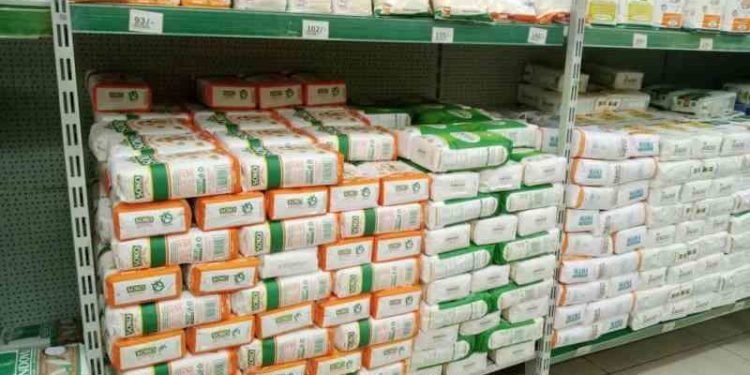Food inflation in Kenya increased by 6.9%, marking its slowest rise in 22 months, as per the latest data from the Kenya National Bureau of Statistics (KNBS) in February.
The last time inflation increased at a slower rate was in April 2021, when it rose by 6.4%, coinciding with a period of drought affecting staple crop harvests.
The decrease in prices was attributed to increased rainfall, resulting in better harvests. Benjamin Avusevwa, the representative of KNBS Director General, highlighted decreases in prices of tomatoes, sugar, maize, and maize flour by 5.7%, 4.6%, 3.4%, and 1.6%, respectively, from January to February 2024.
However, prices of spinach, sukuma wiki, and wheat flour increased by 3.9%, 3.4%, and 2.6%, respectively, during the same period. Nevertheless, even the prices of sukuma wiki and spinach dropped year-on-year.
Conversely, prices of beans, carrots, beef with bones, Irish potatoes, broken rice, and wheat flour increased in February compared to the same month last year.
For low-income households, food represents a significant portion of their income; thus, lower food prices offer substantial relief to millions of poor Kenyans.
The decline in food inflation to 6.3% over the past 12 months marks a 23-month low, providing some respite. President William Ruto, focusing on easing the cost of living, supported farmers by providing them with affordable fertilizer.
The improved rains also aided in reducing the country’s import bill, which decreased to 9.33% of total imports in December, alleviating pressure on dollar reserves.
In July of the previous year, the food import bill peaked at 17.22% of total imports as the country depleted its dollar reserves importing cooking oil, beans, and rice.
The current inflation rate of 6.3% is the lowest since March 2022, remaining within the Central Bank of Kenya’s (CBK) target range of 2.5% to 7.5%.
In early February, the CBK’s Monetary Policy Committee (MPC) raised its benchmark lending rate to 13%, marking a 12-year high, in response to the weak shilling and concerns about inflation persisting at the upper bound of the 5.0% to 7.5% range.


















